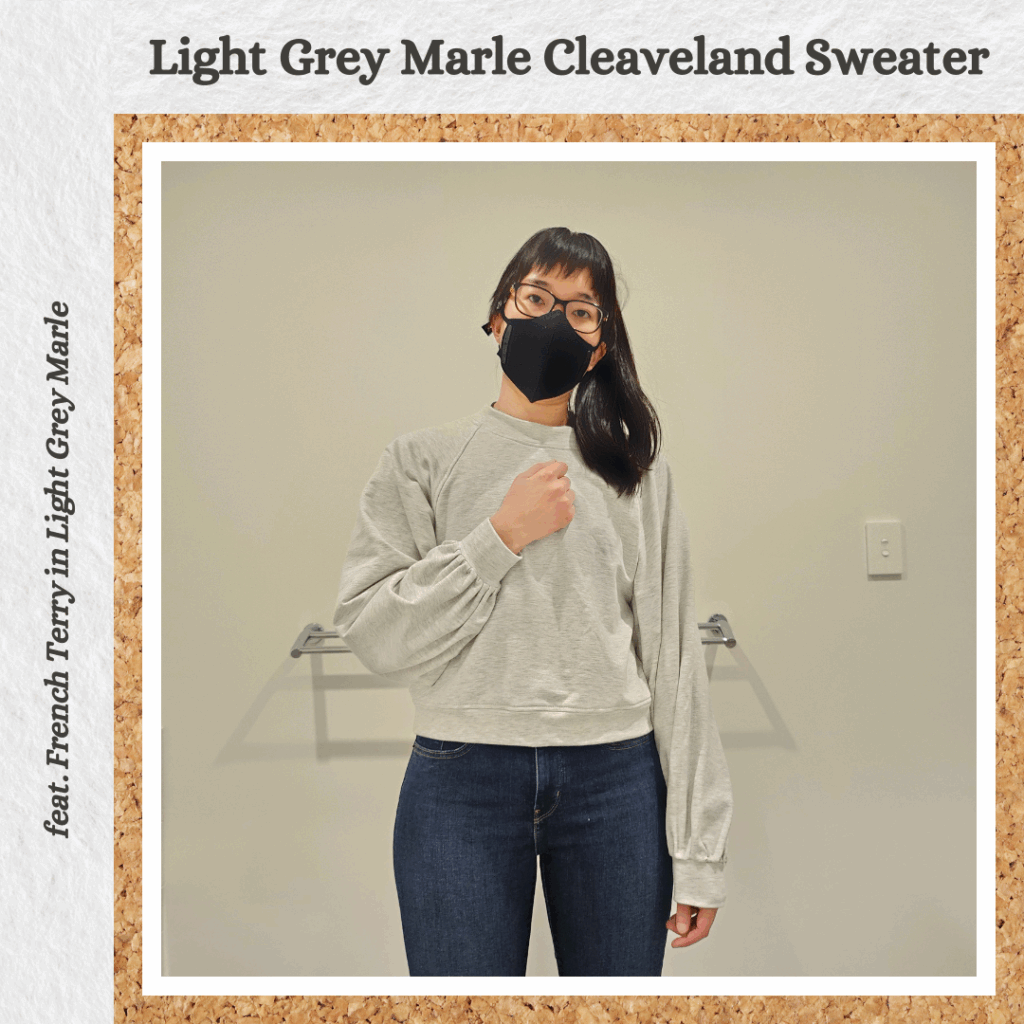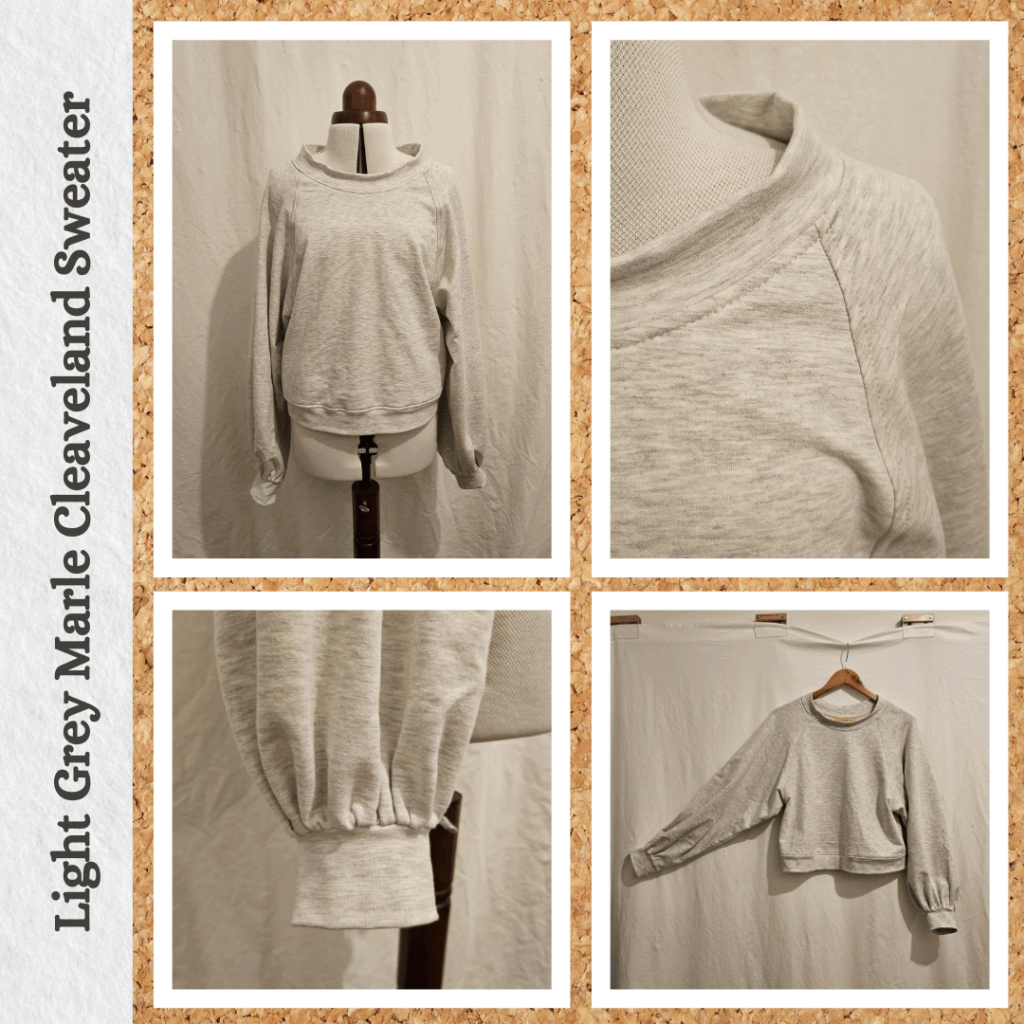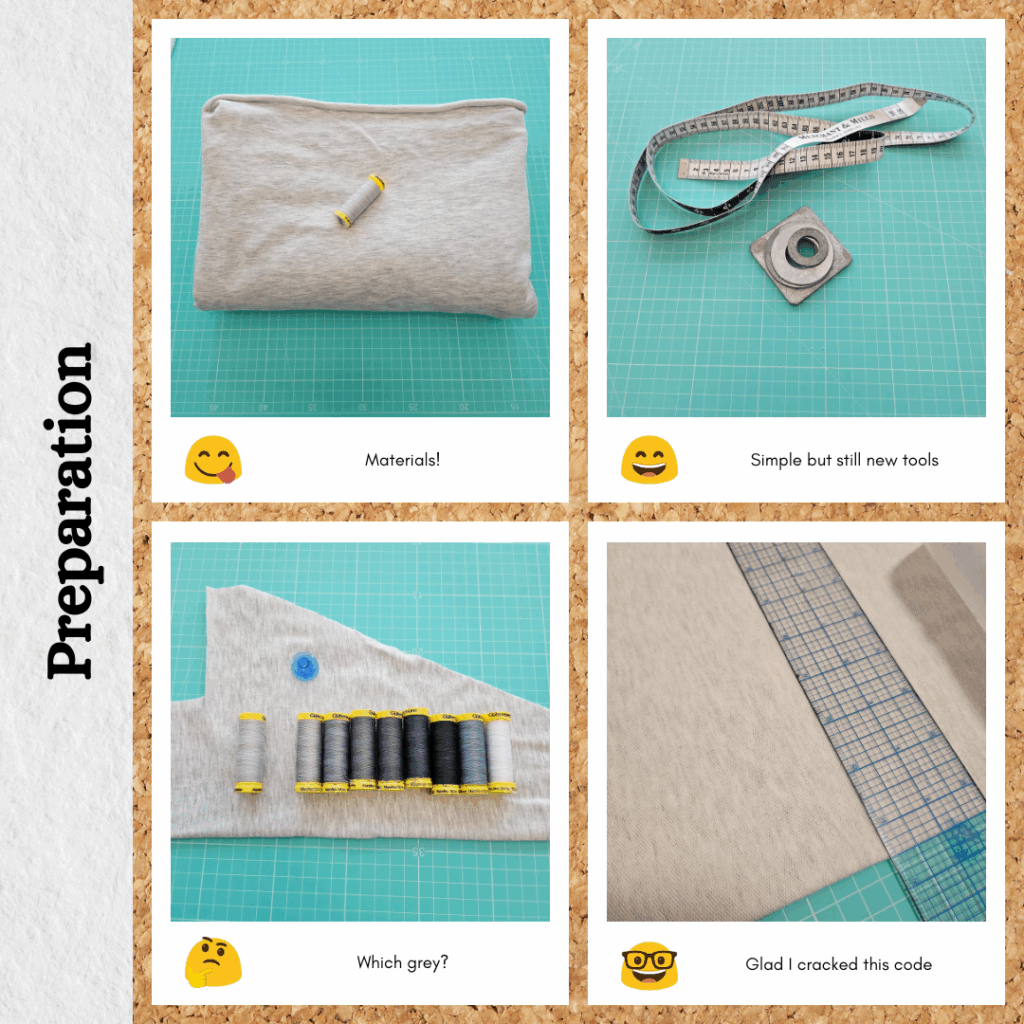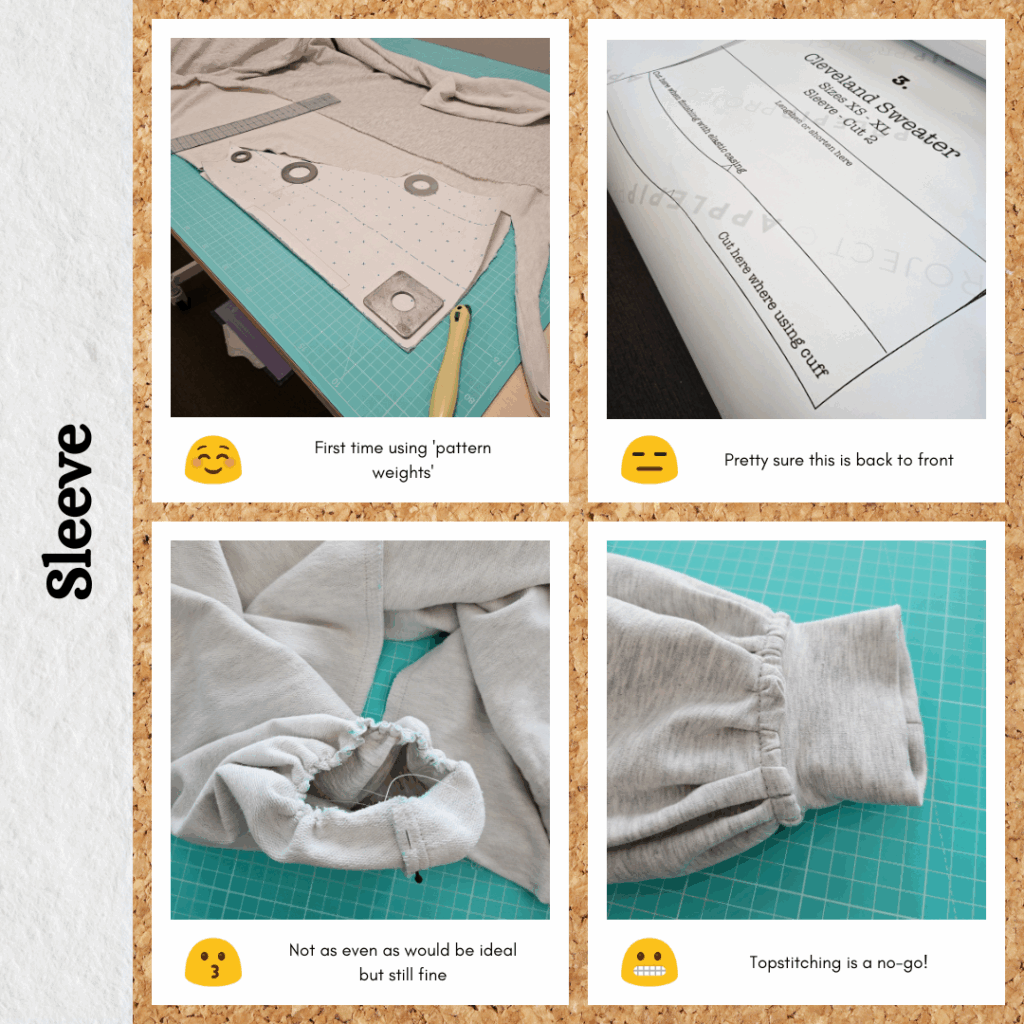

Planning and Design
I saw this pattern when I was searching Etsy for jacket patterns for some of my Splatoon projects and thought it was adorable 😍 After getting a bit of an ‘Etsy Scare’ where a pattern I had wishlisted just dropped off the face of the interwebs…I bit the bullet and just went and bought this. I would have made this sooner but it only came with an A0 printing option haha. I should know by now to read the fineprint lol.
Well now I have an A0 printing service that I like and this was one of the patterns I had printed with my first order. I slotted this one in while making the Urban Upcycle Top (before I tackled the buttons) because I wanted a quick win (2.5 hrs to be exact 😁)
I actually bought the fabric for this before I bought the pattern because I knew I wanted it to complete my Homecraft Textiles grey marle sweater collection LOL. And bought all the grey Maraflex for my home-made Maraflex Swatch project.
Materials
- Pattern
- Cleaveland Sweater (Etsy – Applepip Project)
- Fabric
- French Terry – Light Grey Marle (Homecraft Textiles)
- Thread
- Maraflex col. 80
Sustainability Check
👍 The french terry is 95% cotton and 5% spandex so technically biodegradable
👍 Maraflex is 100% polybutylene terephthalate. I assumed this would be fit for landfill only but apparently it is compostable? And ‘near-infinitely recyclable’ although it’s not like the thread is going to ever be removed to be recycled separately. It doesnt degrade in marine or fresh water though. But I think the compostable attribute is the most relevant here.
Construction
Preparation
I’m fine with 1cm seams for knits since I just overlock the edges, so was able to just directly transfer the pattern without any adjustments. I chose size S, based on the finished measurements I could fit an XS but I didn’t want it to be too fitted so sized up one. I think the instructions are the wrong way around for the sleeve, I went with what I thought was right and based on the final product, I think I really was right.
I tested out a bunch of washers I got from my bro as pattern weights, very happy with them, now I just need more 🤣 I also realised I could use my usual Fiskars rotary cutter since the pattern pieces were fairly large. Honestly not that impressed with my 18mm Clover one but perhaps it should only be used for fine fabrics. I also thought of a good way to figure out grain on this particular knit (by checking the loops are perpendicular to the folded fabric edge).

Sewing
Nice and easy raglan sleeves. I wondered about pushing the front seams to the back cos I thought it would be better to push to front to match the back with my topstitching, but I’m glad I followed the instructions because doing it their way meant the topstitched seams nested nicely on the side seams 😊
I was going to overlock the sleeves for the gathering but decided this after I had sewn the side seams and thought it would be too annoying to do now that the sleeves were assembled in a round. I figured this kinda project it isn’t critical to have super even spaced gathers, in fact it adds to the charm when it’s a bit more hodge podge 😝 I was happy with the way the gathers turned out, but wasn’t sure if topstitching would ruin it so did a test on one sleeve. Yup, no topstitching for the cuffs! I ended up handsewing these using the Maraflex thread (just in case a bit of stretch is required when putting on/taking off the top). I thought it would be really annoying to sew but the loops on the back of the knit made it super duper easy.
The waistband and neckband I did the same way as usual but since I have my trusty duckbill scissors, I did grade the seams before topstitching 👍

Reflections
It’s a bit cropped so we’ll see how much I like that. I also think the neckband could sit flatter? We’ll also see how I like that in practice too.
If I made this again, I think I would make all the bands and cuff seams encased. This would eliminate the need for me to hand sew the cuff seams down and look more professional. I think by stay stitching the neckband and clipping like in the Kalle Shirt-making Course, it should also make that particular part easier.
Things I learnt:
- How to find the straight grain on a french terry knit
- Do not topstitch over pleats? At least not a 6mm offset topstitch
Categories: Sewing
Leave a Reply